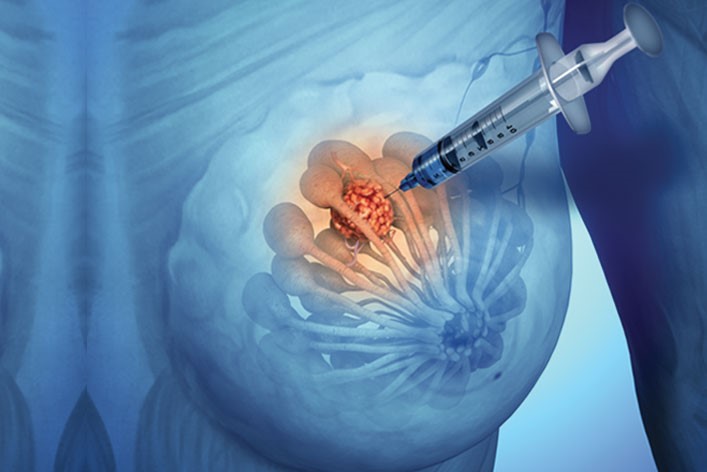
Biopsy: what it is and when it is performed
A biopsy consists of taking and analysing a patient’s biological tissue and is therefore to be considered a medical test in its own right
A biopsy is a test that can have several diagnostic purposes, i.e:
- the biopsy is performed in order to exclude or confirm a suspected disease;
- the biopsy can provide information about a disease (i.e. its severity, extent and possible treatment) and its possible course (the prognosis);
It can be performed on soft tissue, e.g. skin and mucosa, but also on hard tissue, e.g. bone.
Biopsy when performed on soft tissue can be of two types:
- incisional, in which one or more fragments of the lesion examined are removed;
- excisional, in which the complete removal of the lesion takes place.
How and when a biopsy is performed
The biopsy and therefore the removal of tissue can be performed in different ways
- percutaneously, with a CT scan or ultrasound;
- endoscopically, for example, during a gastroscopy, colonoscopy or bronchoscopy;
- by removal during a surgical operation;
- by needle sampling (in this case we will speak of needle biopsy) guided by ultrasound;
The tissue sample taken is sent to the laboratory where it undergoes treatment with formalin and paraffin and is cut into slices 2-4 microns thick and analysed under a microscope.
The diagnosis will be made by a specialist in pathological anatomy who will evaluate the tissue sample taken from the patient.
The patient will have to be careful of the sutures and therefore avoid movements that put tension on or impact the affected area during the tissue harvesting procedure.
Sometimes intradermal patches are applied and contact with water must be prevented until the sutures are in place.
Biopsy, as mentioned, is performed to diagnose or to confirm infections, inflammations and tumours affecting various internal organs, as well as to assess the course of disease and to determine the possible treatment to be administered to the patient.
It is commonly used to diagnose liver disease, acute or chronic kidney disease, diseases of the pleura (pleurisy, effusions and neoplasms) and the prostate.
In the diagnosis of certain forms of leukaemia and lymphoproliferative processes (Hodgkin’s and non-Hodgkin’s lymphomas), bone marrow biopsy plays a key role, which consists of taking a bone marrow sample using a mandrel needle.
Results can be collected later (about 10 days), as time is needed for preparation and reading of the samples taken.
The different types of biopsy
Liver biopsy refers to the taking of a fragment of liver tissue through a dedicated needle, the ultimate aim being to identify and characterise various liver diseases.
The liver biopsy is used if there is suspicion of a liver disease that cannot be investigated otherwise.
As seen, it is also used if one wants to establish the severity if the disease has already been ascertained by other techniques.
When we talk about liver biopsy, we are talking about an invasive and potentially dangerous test.
It should therefore be performed when no other less invasive or non-invasive methods are available to obtain adequate diagnostic information.
A kidney biopsy involves the collection of a sample of kidney cells that will then be analysed in the laboratory.
The most common procedure is the percutaneous route: this is a minimally invasive test that involves the use of a needle that is passed through the skin and into the kidney.
Before proceeding with the kidney biopsy, diagnostic tests must be performed to avoid complications during the procedure.
However, most of the time the procedure is safe and free of complications.
The final results are reliable and provide useful information for the patient’s diagnostic framework.
Breast biopsy or breast biopsy is used to remove a small sample of breast tissue
A breast biopsy is considered the best way to assess and determine when cancer is suspected.
It is recommended by doctors when lumps or thickening of breast tissue are felt.
Patients are adequately prepared for the biopsy and should cooperate with their doctors by informing them of allergies or the use of anticoagulants, for example.
Read Also
Emergency Live Even More…Live: Download The New Free App Of Your Newspaper For IOS And Android
Fusion Prostate Biopsy: How The Examination Is Performed
Spinal Biopsy: What It Is, How It Is Performed And What Risks It Presents
Echo- And CT-Guided Biopsy: What It Is And When It Is Needed
What Is Needle Aspiration (Or Needle Biopsy Or Biopsy)?
What Is Echocolordoppler Of The Supra-Aortic Trunks (Carotids)?
What Is The Loop Recorder? Discovering Home Telemetry
Cardiac Holter, The Characteristics Of The 24-Hour Electrocardiogram
Peripheral Arteriopathy: Symptoms And Diagnosis
Endocavitary Electrophysiological Study: What Does This Examination Consist Of?
Cardiac Catheterisation, What Is This Examination?
Echo Doppler: What It Is And What It Is For
Transesophageal Echocardiogram: What Does It Consist Of?
Venous Thrombosis: From Symptoms To New Drugs
Echotomography Of Carotid Axes
What Is A Liver Biopsy And When Is It Performed?
Abdominal Ultrasound: How It Is Performed And What It Is Used For
What Is Retinal Fluorangiography And What Are The Risks?
Echodoppler: What It Is And When To Perform It



